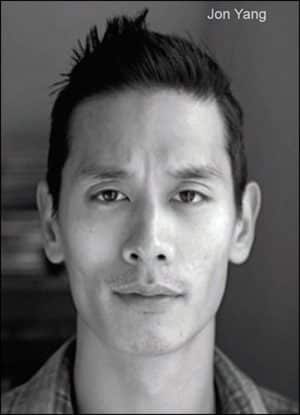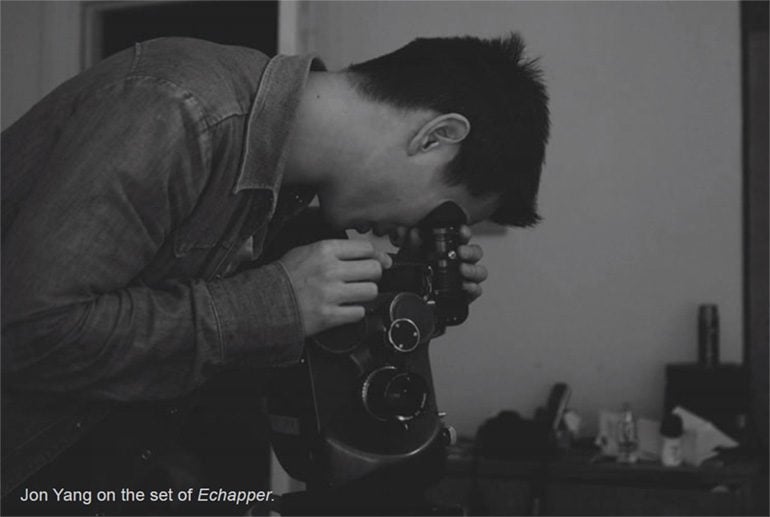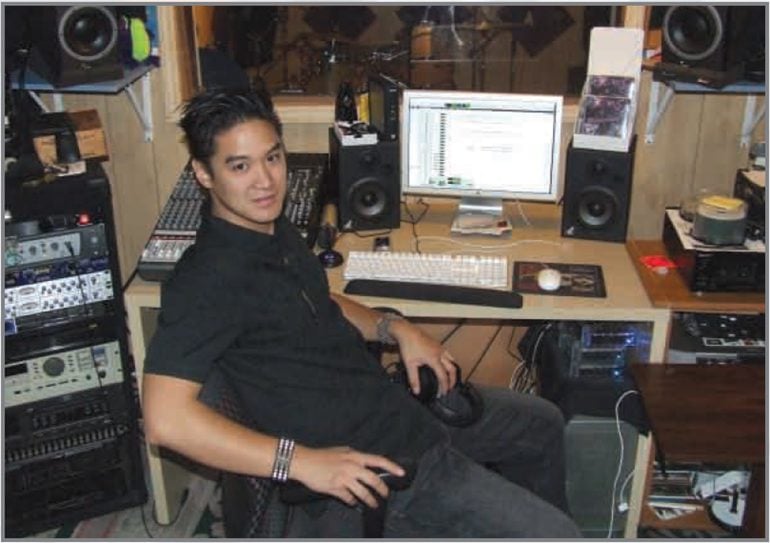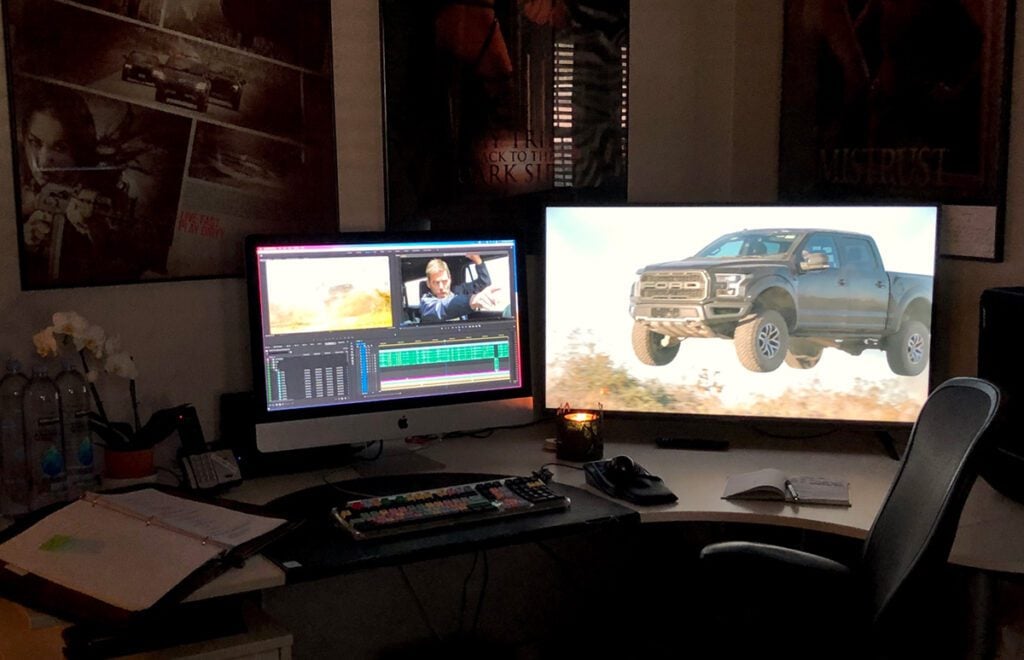Second Place Award Recipient of the 2007 Annual Summer Shorts Competition
Echapper won the second-place grand prize award of the 2007 Annual Summer Shorts Film and Video Awards. Through masterful editing, cuts and fades, and stylish lighting, UK-based filmmaker Jon Yang focuses on the dreamlike side of the noir genre and captures its essence perfectly. Jon wrote, produced, directed and edited Echapper, which is a stylized, traditional, black-and-white film noir drama unfolding and revealing a life-impacting event that connects three individuals in his story.

Jon Yang: The story was a result of a class we had at film school. A short film would be made from a random selection of 5 objects. A ‘bicycle’, ‘light’, ‘vase’, ‘ring’ and ‘picture’ were chosen. From these 5 items, I began to conjure up a story in my mind. I knew from an early stage I wanted to make a love story with no dialogue, as this can make the whole process a little more straightforward, both in production and post-production. To compliment the lack of audio, I decided to shoot the film in black-and-white and create a stylized film with a classical score running over it. The story’s fragmented narrative adds to the mood of the piece, by maintaining an air of mystery. My aim was to engage the audience and to encourage them to participate. Essentially, I was inspired by the old fashioned storytellers and wanted to make a simple film of pure cinematic experience.
What inspired your film’s title, Echapper?
Jon Yang: ‘Echapper’ means ‘getaway’. I initially had it titled, The Getaway, but knew it was a famous Steve McQueen movie. I love European films, so I looked it up in French and ‘Echapper’ just jumped out at me.
What were some of your goals while making your film?
Jon Yang: To make it as cinematic as possible. To make it look like it had some money put into it. The film school provided the film stock and processing, so we worked on a zero budget. And above all, to have fun and make a movie I could be proud of, which I am.
Could you tell us about the cameras you used to shoot Echapper?
Jon Yang: I used a 35mm Éclair Cameflex Techniscope. In terms of lenses, we were limited in choice, and also in terms of location space. But I did use a 16mm prime lense for the majority of the shoot.
In Echapper, there are a number of low POV shots, and these include the three characters in your story. Could you talk about this a bit? Was this done intentionally?
Jon Yang: Yes, it was done intentionally. I just like to see things from different angles, plus it adds to the stylization of the piece. Seeing life from a different perspective. Keeping low to the ground is synonymous to maintaining a low profile, which the film was also about.
What other kinds of techniques did you use to create drama for scenes?
Jon Yang: I used tracking shots to help draw in the audience. I love tracking shots. They are frustrating to set up, I know, if time is running out. But they can add so much if used in the right context. I kept it simple. I used less than 800ft of film stock to make the whole film. So I didn’t ask too much from the actors, just for them to use their common sense and not be self-conscious in front of the camera. I think if dialogue had been used it would have caused too many problems. Less is more.
A lot of the shots appear to be hand held. Please tell us about some of the camera work, as well as reasons behind the techniques you used.
Jon Yang: Yes, a lot of the shots were hand held. Some were planned, others out of necessity. Some of the locations were so small we had no space to set up a tripod, let alone find a place to hide the lights. Using a wide angle lens creates the illusion of space, so that made the rooms appear larger.
How did you cast your film?
Jon Yang: The first actor is George French. He was on the course and had never acted before. I kind of twisted his arm and said it would make things easier if he got over his camera shyness. He was my partner in crime in this movie. Without George I couldn’t have got this film made. He even sacrificed his car for it and that wasn’t to sell to raise funds, we had a minor incident reversing down a road while filming. Thanks, George. He was also DP. Abbie Brandon is the girl in the film, and she also was a student at the film school. I don’t think Abbie had any acting experience either. I am the third actor who appears, and I have some experience acting. So casting was a straightforward process of asking and accepting. It makes the scheduling a whole lot easier. I also knew it was going to be more of a director’s piece than an actor’s.
In order to shoot the scenes that you acted in, did you have a second director on set?
Jon Yang: No, we didn’t. I knew exactly what I needed to shoot. So I just set the shot up exactly how I wanted it with George standing in for me, (we are of similar heights which helps) and then switched places.
There’s a scene that builds up a sense of drama. How did you shoot the character on the bicycle riding down the street, with the close up on the bicycle wheel spokes? Was that a metaphor for time?
Jon Yang: There are a lot of metaphors in the film, and I hope all of them get spotted. As for filming down the street, I was sitting in the back of George’s car operating the camera, with Christian Wise another student next to me acting as the spark. It was hilarious until George drove too close to some parked motorbikes causing a spectacular domino affect. Fortunately, nothing was damaged. Right, George? Yes, the wheel spokes can symbolize the rapid movement of time.
What did you use to edit Echapper – and how long did it take to shoot, edit, and complete your film?
Jon Yang: I used iMovie since I knew it didn’t require anything but cuts and fades. It took me a day to put it together and another day to have a final cut. It took a total of 2 days filming. So I guess a total of 4 days from start to finish.
Being that your story is one that connects three characters in a very unique way, what sort of things came up in the editing room? Any challenges or surprises?
Jon Yang: No challenges or surprises really. I knew I didn’t get the reverse of Abbie riding down the street so we had to cheat it and film her stationary during her Shawshank freedom pose. It’s a shame since I wanted that shot to be moving. It worked out okay, artistic license granted, but certainly not my first option. I also wanted the film to be wet, with constant rain, but that was impossible without any money in the project. It certainly would have played an additional character in the film. The story is how I imagined it to be. I didn’t shoot anything extra and kept takes down to a minimal. I was just relieved the footage came out okay. We had a problem with the camera one day and wondered if we’d lost any footage on that roll. Fortunately we hadn’t.
What was your favorite scene to shoot and why?
Jon Yang: I really like the scene when Abbie leaves the house and my character returns to it. I like the transition of one person leaving and one person arriving with essentially one camera position. However, I do believe all the scenes serve a purpose.
Could you share with us one indie filmmaking tip in regards to shooting black-and-white?
Jon Yang: I don’t think I’m in a position to give any advice. Let me think. Don’t think in colours, think in textures and hues. I think that makes some sort of sense.
How about for shooting film noir?
Jon Yang: Rhythm is important. Shot selection too. To create a rhythm that travels well in relation to the pictures and sound. To marry the two together. To let the film breathe and settle. But whatever works for you.
Interview conducted by Jody Michelle Solis





